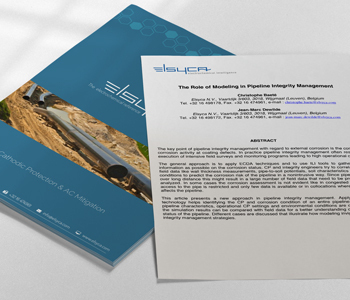
Modeling & pipeline integrity management
(MECC, Feb 2014)
This article presents a new approach in pipeline integrity management. Applying modeling technology helps identifying the CP and corrosion condition of an entire pipeline network.

Modeling & pipeline integrity management (MECC, Feb 2014)
Christophe Baeté, Jean-Marc Dewilde, Elsyca n.v.
Abstract
The key point of pipeline integrity management with regard to external corrosion is the control of the corrosion activity at coating defects. In practice pipeline integrity management often results in the execution of intensive field surveys and monitoring programs leading to high operational cost.
The general approach is to apply ECDA techniques and to use ILI tools to gather as much information as possible on the corrosion status. CP and integrity engineers try to correlate different field data like wall thickness measurements, pipe-to-soil potentials, soil characteristics and coating conditions to predict the corrosion risk of the pipeline in a nonintrusive way. Since pipelines extend over long distance this might result in a large number of field data that need to be processed and analyzed. In some cases the corrosion assessment is not evident like in congested areas where access to the pipe is restricted and only few data is available or in collocations where interference affects the pipeline.
This article presents a new approach in pipeline integrity management. Applying modeling technology helps identifying the CP and corrosion condition of an entire pipeline network. The pipeline characteristics, operational CP settings and environmental conditions are considered, and the simulation results can be compared with field data for a better understanding of the corrosion status of the pipeline. Different cases are discussed that illustrate how modeling invigorates pipeline integrity management strategies.
Download pdf